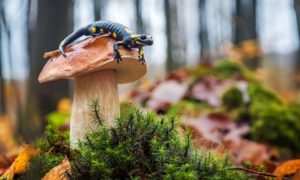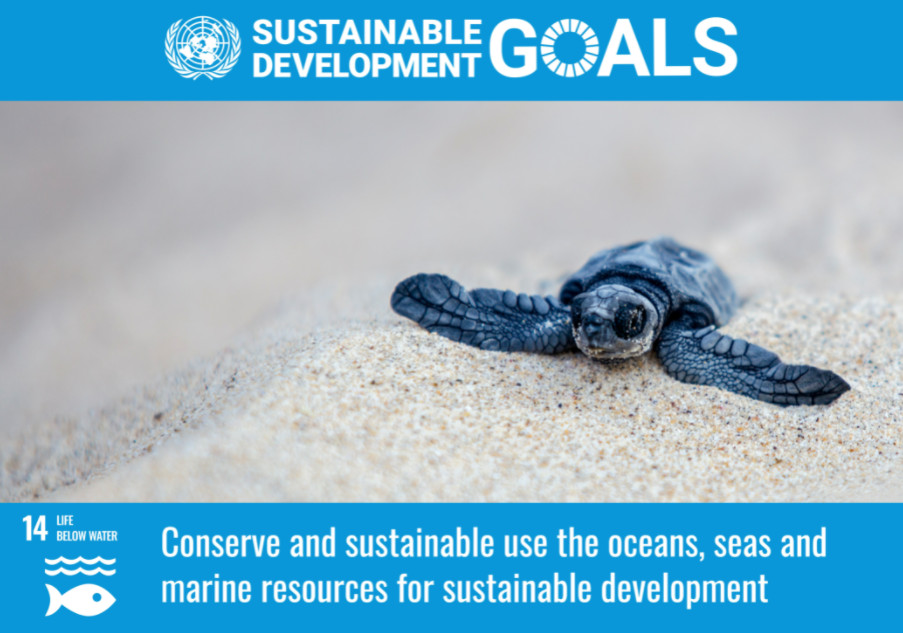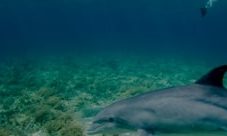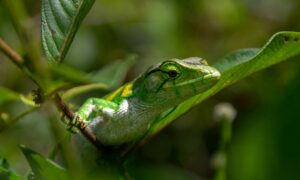Update
Biodiversity and Geneva
A healthy biodiversity and functioning ecosystems are essential for human societies. We are dependent on natural resources and nature also protects our health in many ways. As a global hub for environmental governance, Geneva and the organizations it hosts, plays a key role in the protection of biodiversity globally.
Importance of Biodiversity
Biodiversity is the living fabric of our planet. It underpins human well-being in the present and in the future, and its rapid decline threatens nature and people alike. Scientists estimate that there are at least 8 million species of plants and animals living on earth today, including humans. The ecosystems in which these species live are incredibly complex and every piece of an ecosystem depends on the others like a jigsaw puzzle. Humans are immersed in ecosystems and depend on these interconnected networks of plants, animals, and people. However, human activities are significantly impacting ecosystems, for instance through man-made climate change, pollution, and habitat loss. By removing just one species as a result of climate change, pollution, habitat loss, or some other natural or man-made factors, a domino effect can occur that has a big impact on the entire ecosystem.
A healthy biodiversity and functioning ecosystems are essential for human societies in numerous ways. About half of the world’s GDP – about USD 44 trillion – is dependent on natural resources, while nature provides at least USD 125 trillion worth of services annually. Nature also protects our health in many ways. As the current pandemic has shown, the increasing negative impact of human activities on the environment severely threatens human and ecosystem health. Furthermore, as the UN Special Rapporteur on human rights and the environment pointed out in one of his latest report, ecosystem degradation and the decline of biodiversity are threatening the rights to life, health, food, a healthy environment, water, an adequate standard of living and culture.
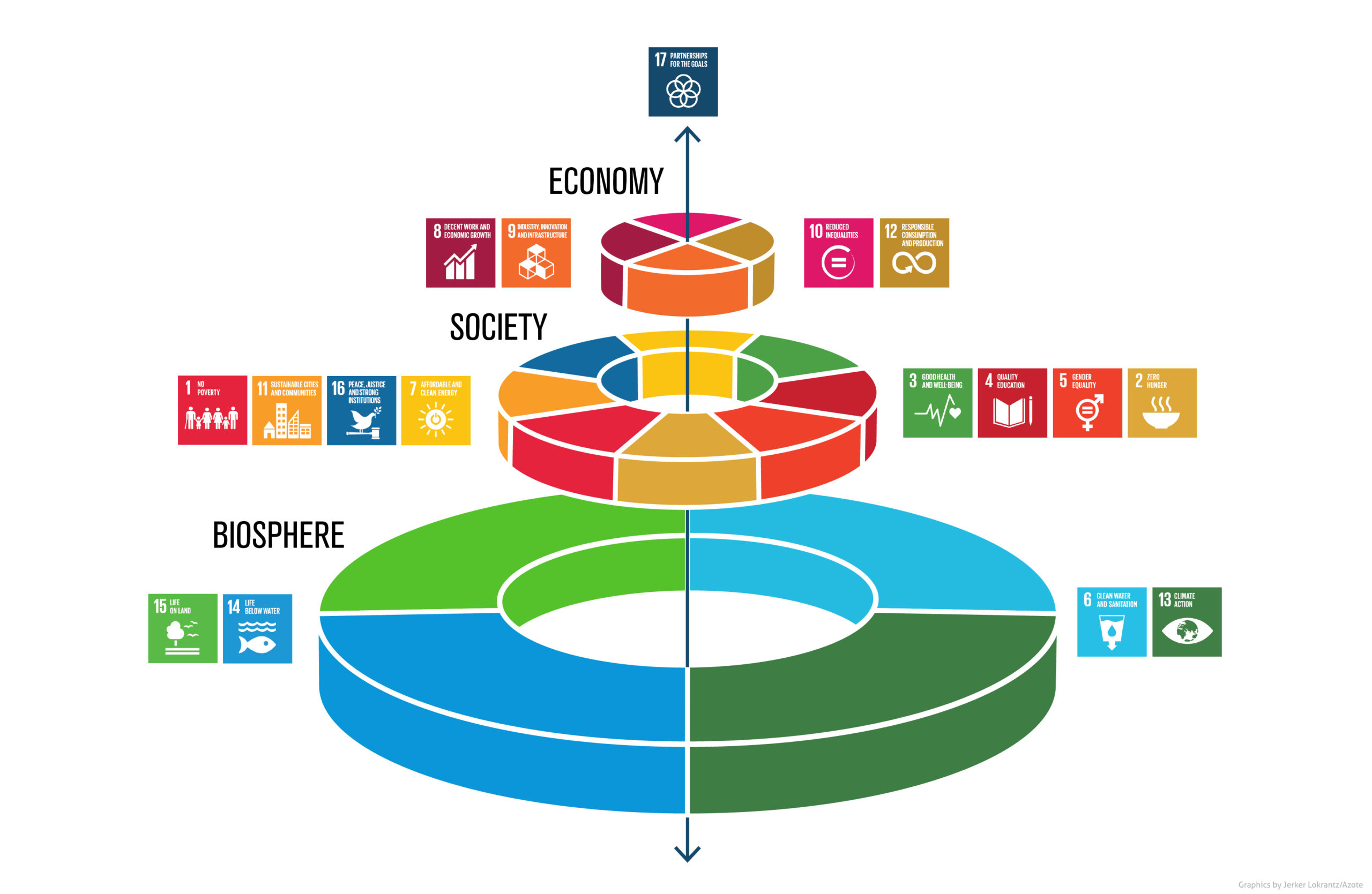
A healthy biosphere, with a rich biodiversity and functioning ecosystems, is the foundation to achieve the societal and economic goals of the SDGs. Source: Stockholm Resilience Centre
Convention on Biological Diversity
Signed by 150 government leaders at the 1992 Rio Earth Summit, the Convention on Biological Diversity is dedicated to promoting sustainable development. Conceived as a practical tool for translating the principles of Agenda 21 into reality, the Convention recognizes that biological diversity is about more than plants, animals and micro organisms and their ecosystems – it is about people and our need for food security, medicines, fresh air and water, shelter, and a clean and healthy environment in which to live.
International Day for Biological Diversity
The International Day for Biological Diversity, celebrated each year on May 22, aims to increase understanding and awareness of biodiversity issues. Although it was originally celebrated in late December, the UN General Assembly later decided to move the date to 22 May, which commemorates the adoption of the Convention on Biological Diversity (CBD) in 1992.
Biodiversity is the living fabric of our planet. It underpins human well-being in the present and in the future, and its rapid decline threatens nature and people alike. According to the latest Global Assessment by the Intergovernmental Science-Policy Platform on Biodiversity and Ecosystem Services (IPBES), human activities are driving biodiversity loss at an unprecedented rate. However, the assessment also indicated that solutions existed and that it was not too late to act.
Kunming-Montreal Global Biodiversity Framework
The Kunming-Montreal Global Biodiversity Framework (GBF) was adopted during the fifteenth meeting of the Conference of the Parties (COP 15) following a four-year consultation and negotiation process. This historic Framework, which supports the achievement of the Sustainable Development Goals and builds on the Convention’s previous Strategic Plans, sets out an ambitious pathway to reach the global vision of a world living in harmony with nature by 2050. Among the Framework’s key elements are 4 goals for 2050 and 23 targets for 2030.
The implementation of the Kunming-Montreal Global Biodiversity Framework will be guided and supported through a comprehensive package of decisions also adopted at COP 15. This package includes a monitoring framework for the GBF, an enhanced mechanism for planning, monitoring, reporting and reviewing implementation, the necessary financial resources for implementation, strategic frameworks for capacity development and technical and scientific cooperation, as well as an agreement on digital sequence information on genetic resources.
In adopting the Kunming-Montreal Global Biodiversity Framework, all Parties committed to setting national targets to implement it, while all other actors have been invited to develop and communicate their own commitments. At the next meeting of the Conference of the Parties in 2024 in Türkiye, the world will take stock of the targets and commitments that have been set.
Biodiversity and the SDGs
SDG 14: Life Below Water
The Challenge
We are a land dwelling species, but we depend more on our oceans than we can imagine. Oceans cover close to three quarters of the Earth’s surface, contain 97% of the Earth’s water, and represent 99% of the living space on the planet by volume. Over three billion people depend on marine and coastal biodiversity for their livelihoods. Globally, the market value of marine and coastal resources and industries is estimated at USD 3 trillion per year or close to 5% of global GDP. Oceans contain more than 200,000 identified species, but actual numbers may lie in the millions. It is estimated that 91% of ocean species have yet to be classified, and that 95% of the ocean remains unexplored. Oceans absorb about 40% of the carbon dioxide produced by humans, buffering the impact of global warming. They also serve as the world’s largest source of protein, with more than three billion people depending on the oceans as their primary source of protein. Unmonitored fishing is also contributing to the rapid depletion of many fish species and are preventing efforts to save and restore global fisheries and related jobs, causing ocean fisheries to generate USD 50 billion less per year than they could. As much as 40% of the world’s oceans are heavily affected by human activities, including pollution, depleted fisheries, and loss of coastal habitats. Across the globe, 1,851 species of fish — 21 percent of all fish species evaluated — were deemed at risk of extinction by the IUCN in 2010, including more than a third of sharks and rays.
Why is this important?
Coastal and marine resources contribute USD 28 trillion to the global economy every year. But this is only a small part of why they are so important to our planet. The world’s oceans – their temperature, chemistry, currents and life – drive global systems that make the Earth habitable for humankind. Our rainwater, drinking water, weather, climate, coastlines, much of our food, and even the oxygen in the air we breathe, are all ultimately provided and regulated by the sea. Throughout history, oceans and seas have been vital conduits for trade and transportation. Careful management of this essential global resource is a key feature of a sustainable future.
How can we address this?
SDG 14 commits countries to unite over what is a truly global responsibility – the protection of our oceans and the lives that depend on it. By 2020, countries commit to achieving the sustainable management of marine ecosystems, and in another five years, significantly reduce marine pollution of all kinds. This will require an international scientific partnership, regulation of harvesting and fishing, and enhance our research and knowledge on issues critical to the survival of life below water.
SDG 15: Life On Land
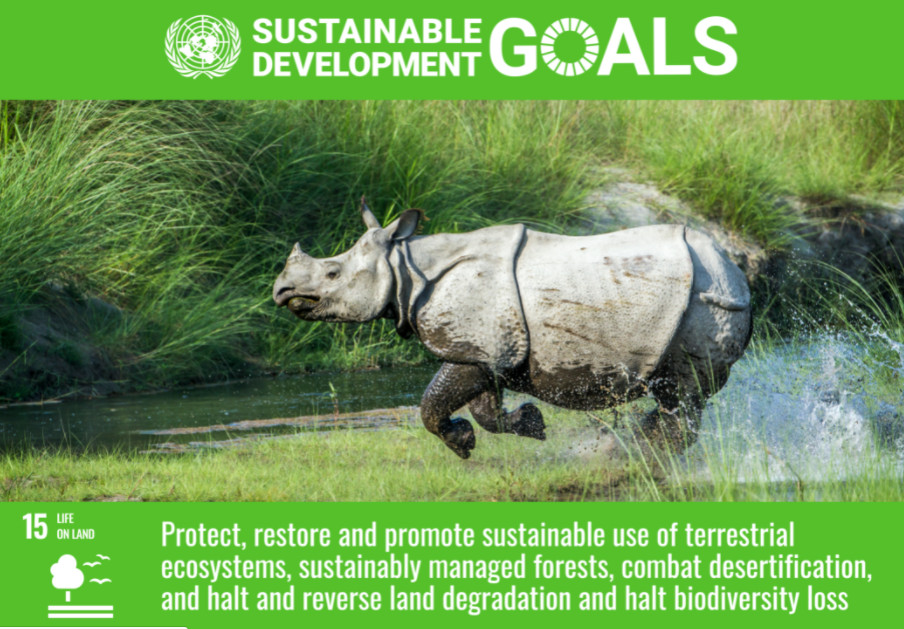
The Challenge
Our fate as a species depends on the state of our most important habitat – land. Our future is linked to the survival of land ecosystems. Through photosynthesis, plants provide the oxygen we breathe and the food we eat and are thus the foundation of most life on Earth. They’re also the source of a majority of medicines in use today. Of the more than 300,000 known species of plants, the IUCN has evaluated only 12914 species, finding that about 68% of evaluated plant species are threatened with extinction. A third or more of all the roughly 6300 known species of amphibians are at risk of extinction. Globally, an estimated 12% of known 9865 bird species are now considered threatened, with 192 species, or 2%, facing an “extremely high risk” of extinction in the wild. Of the 1.3 million known invertebrate species, the IUCN has evaluated about 9,526 species, with about 30 percent of the species evaluated at risk of extinction. About 90% of primates live in tropical forests, which are fast disappearing. The IUCN estimates that almost 50% of the world’s primate species are at risk of extinction. Overall, the IUCN estimates that half the globe’s 5491 known mammals are declining in population and a fifth are clearly at risk of disappearing forever with no less than 1131 mammals across the globe classified as endangered, threatened, or vulnerable. In addition to primates, marine mammals — including several species of whales, dolphins, and porpoises — are among those mammals slipping most quickly toward extinction. Globally, 21 percent of the total evaluated reptiles in the world are deemed endangered or vulnerable to extinction by the IUCN — 594 species.
An estimated 18 million acres (7.3 million hectares) of forest, which is roughly the size of the country of Panama, are lost each year, according to FAO. It is estimated that 15 percent of all greenhouse gas emissions come from deforestation, according to the WWF.
The persistent degradation of drylands has led to the desertification of 3.6 billion hectares. Currently, 2.6 billion people depend directly on agriculture, however 52% of the land used for agriculture is moderately or severely affected by soil degradation. Deforestation and desertification – caused by human activities and climate change – pose major challenges to sustainable development and have affected the lives and livelihoods of millions of people in the fight against poverty.
Why is this important?
Land and forests are the foundation of sustainable development. Forests cover 30% of the Earth’s surface and, in addition to providing food security and shelter, are key to combating climate change, protecting biodiversity and are home to the indigenous population. Forests are home to more than 80% of all terrestrial species of animals, plants and insects. At the same time, around 1.6 billion people also depend on forests for their livelihood, including some 70 million indigenous people. Over 80% of the human diet is provided by plants, with rice, maize and wheat providing 60% of energy intake. In addition, 80% of people living in rural areas in developing countries rely on traditional plant-based medicines to provide their basic healthcare.
How can we address this?
Preserving life on land requires concerted action not only to protect terrestrial ecosystems, but to restore them, and promote their sustainable use for the future. SDG 15 calls for urgent action to halt the degradation of natural habitats, to end the poaching and trafficking of animals, and to integrate ecosystem and biodiversity values into local planning and development processes. Safeguarding places which are important from the point of view of biodiversity is another effective tool, and as of 2014, 15.2% of the earth’s terrestrial and freshwater environments had been protected.
Biodiversity Loss
IPBES Global Assessment Report on Biodiversity and Ecosystem Services
According to the Global Assessment Report on Biodiversity and Ecosystem Services by the Intergovernmental Science-Policy Platform on Biodiversity and Ecosystem Services (IPBES), human activities are driving biodiversity loss at an unprecedented rate. About 75% of terrestrial environment and 66% of the marine environment have been significantly altered by human actions. Approximately 1 million animal and plant species are now threatened with extinction. Overall, current negative trends in biodiversity and ecosystems are undermining progress towards the Sustainable Development Goals (SDGs). The main global drivers of biodiversity loss are climate change, invasive species, over-exploitation of natural resources, pollution and urbanization. Without rapid and ambitious action to reverse these trends and safeguard nature, we are at risk of failing to achieve the 2030 Agenda.
Key Statistics and Facts from the Report
- 75%: terrestrial environment “severely altered” to date by human actions (marine environments 66%)
- 47%: reduction in global indicators of ecosystem extent and condition against their estimated natural baselines, with many continuing to decline by at least 4% per decade
- 28%: global land area held and/or managed by Indigenous Peoples , including >40% of formally protected areas and 37% of all remaining terrestrial areas with very low human intervention
- +/-60 billion: tons of renewable and non-renewable resources extracted globally each year, up nearly 100% since 1980
- 15%: increase in global per capita consumption of materials since 1980
- >85%: of wetlands present in 1700 had been lost by 2000 – loss of wetlands is currently three times faster, in percentage terms, than forest loss.
WWF Living Planet Report
WWF’s Living Planet Report, published every two years, is a scientific study of biodiversity and the health of our planet. Since 1998, it has been charting the devastating impacts human activities are having on the world’s wildlife and natural world. The 2022 report revealed an average decline of 69% in species populations since 1970. Biodiversity is being lost at an alarming rate and this loss effects our own health and well-being.
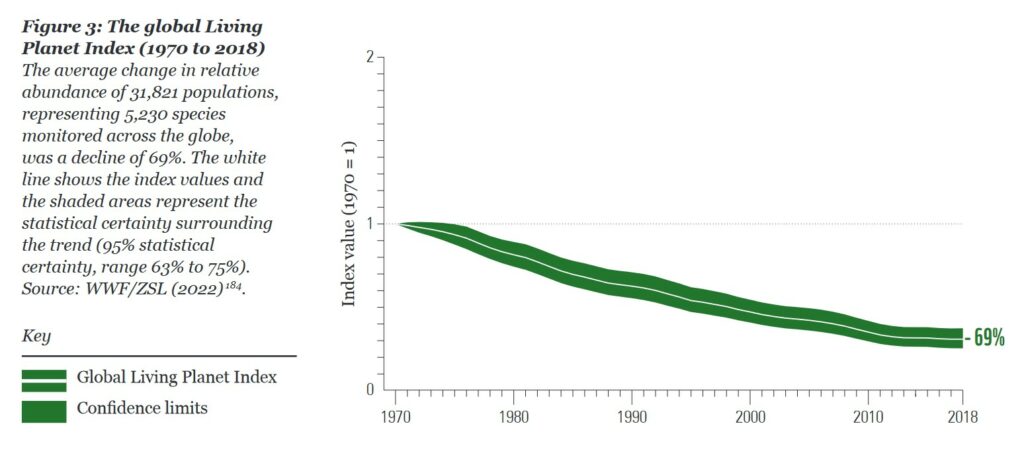
Source: Living Planet Report 2022. WWF.
Role of Geneva
Organizations are listed in alphabetical order
Business for Nature
Business for Nature is a global coalition that brings together companies and conservation organizations with the aim to provide a credible business voice on nature calling for governments to adopt policies to reverse nature loss in this decade. The coalition works with more than 70 international and national partners and a diverse group of businesses from all sectors, sizes and geographies. It encourages companies to commit and act to reverse nature loss, and advocate for greater policy ambition. Business for Nature is legally and fiscally hosted at Rockefeller Philanthropy Advisors, and it financially supported by the Global Environment Facility (GEF), Porticus and the European Commission. In the run-up to the 15th Conference of Parties to the Convention on Biological Diversity (CBD COP15) in December 2022, Business for Nature is campaigning for mandatory requirements for all large businesses and financial institutions to assess and disclose their impacts and dependencies on nature by 2030.
Convention on International Trade in Endangered Species (CITES)
CITES is an multilateral agreement aiming to ensure that international trade in specimens of wild animals and plants does not threaten the survival of the species. The convention currently forbids international commercial trade of 161 bird species (listed on Appendix I) and regulates trade for another 1,300 more species under specific controlled circumstances (listed on Appendix II).
Convention on Wetlands of International Importance (Ramsar Convention)
The Ramsar Convention aims to ensure the conservation and wise use of all wetlands through local and national actions and international cooperation, as a contribution towards achieving sustainable development throughout the world. Wetlands provide vital habitats for many bird species, and they are important to migratory birds in flyways, in nesting areas, and in fall and winter feeding areas. Populations of waterbirds thus are part of the criteria for wetlands to be considered internationally important under the Ramsar Convention.
Foundation Franklinia
Fondation Franklinia is a private foundation established in 2005 under Swiss law. It provides grants to support nature conservation projects. Its objective is to preserve threatened tree species throughout the world and improve their conservation status. Today, it supports primarily in situ conservation actions of globally threatened tree species around the world, species listed as Critically Endangered, Endangered and Vulnerable on the IUCN Red List of Threatened Species. The foundation is governed by a Board with the support of an Experts Committee that provides technical advice on projects. In 2018, a permanent Secretariat was established and based in Geneva; it implements the foundation’s strategy and manages daily operations.
International Union for Conservation of Nature (IUCN)
IUCN is the world’s largest conservation network with the mission to influence, encourage and assist societies throughout the world to conserve the integrity and diversity of nature. The IUCN Red List is the world’s most comprehensive information source on the global extinction risk status of animal, fungus and plant species. It provides essential data for informed conservation decisions – including for protecting some endangered migratory bird species. IUCN’s Business and Biodiversity Programme also focuses on three key areas of work to drive the changes required to deliver on IUCN’s global conservation and sustainable development goals. These include: Valuing biodiversity, promoting biodiversity net gain, and investing in nature.
International Union for the Protection of New Varieties of Plants (UPOV)
UPOV was established by the International Convention for the Protection of New Varieties of Plants. The Convention was adopted in Paris in 1961 and it was revised in 1972, 1978 and 1991. UPOV’s mission is to provide and promote an effective system of plant variety protection, with the aim of encouraging the development of new varieties of plants, for the benefit of society.
International Trade Centre (ITC)
ITC is a development agency dedicated to supporting the internationalization of small and medium-sized enterprises (SMEs). The agency enables SMEs in developing and transition economies to become more competitive and connect to international markets for trade and investment, thus raising incomes and creating job opportunities. Through its “Green to Compete” strategy, ITC supports SMEs to contribute to a nature-positive economy through conservation & sustainable use of biodiversity.
Oceana
Oceana seeks to make our oceans more biodiverse and abundant by winning policy victories in the countries that govern much of the world’s marine life. Oceana, founded in 2001, is the largest international advocacy organization focused solely on ocean conservation.
Partnership for Environment and Disaster Risk Reduction (PEDRR)
PEDRR is a global alliance of UN agencies, NGOs and specialist institutes seeking to promote and scale-up implementation of ecosystem-based disaster risk reduction and ensure it is mainstreamed in development planning at global, national and local levels. Among other activities, PEDRR is advocating for an ambitious post-2020 biodiversity framework, notably through the promotion of Nature-based Solutions.
The Economics of Ecosystems and Biodiversity (TEEB)
TEEB is a global initiative focused on making nature’s values visible. Its principal objective is to mainstream the values of biodiversity and ecosystem services into decision-making at all levels. It aims to achieve this goal by following a structured approach to valuation that helps decision-makers recognize the wide range of benefits provided by ecosystems and biodiversity, demonstrate their values in economic terms and, where appropriate, capture those values in decision-making.
United Nations Conference on Trade and Development (UNCTAD)
Since its launch by UNCTAD in 1996, the BioTrade Initiative has been promoting sustainable BioTrade in support of the objectives of the Convention on Biological Diversity. UNCTAD is currently implementing the Global BioTrade Programme: Linking trade, biodiversity and sustainable development with the support of the Swiss State Secretariat for Economic Affairs SECO. The objective of this four-year programme is to provide key stakeholders with the ability to size and capitalize on trade opportunities from linking biodiversity and sustainable development, thereby advancing the implementation of the SDGs, as well as the Aichi Targets and the Post Aichi framework.
Unearthodox
Unearthodox, launched in March 2023 out of the legacy of the Luc Hoffmann Institute, is an independent foundation fostering the commitment to innovate for diverse, equitable societies that value nature and actively regenerate all life on Earth.
United Nations Economic Commission for Europe (UNECE)
UNECE promotes sustainable use and preservation of ecosystems by supporting the development of biodiversity conservation policies in the region, and the integration of nature conservation in sectoral policies. UNECE contributes to the work of the CBD through information and expertise, notably on forestry and environmental economic accounting.
United Nations Environment Programme (UNEP)
UNEP’s Europe Office is helping countries to build back better from COVID-19, to be more resilient to future crises and to green economies by working with nature. Together with FAO, UNEP also leads the UN Decade for Restoration.
The United Nations Environment Programme Finance Initiative (UNEP FI) works with members and partners to integrate sustainable decision-making into mainstream financial systems.
United Nations Programme on Reducing Emissions from Deforestation and Forest Degradation (UN-REDD)
The UN-REDD Programme was launched in 2008 and builds on the convening role and technical expertise of the FAO, UNDP and UNEP. The Programme supports nationally led REDD+ processes and promotes the informed and meaningful involvement of all stakeholders, including indigenous peoples and other forest-dependent communities, in national and international REDD+ implementation. Additionally, the programme supports national REDD+ readiness efforts in 65 partner countries, spanning Africa, Asia-Pacific and Latin America.
World Business Council for Sustainable Development (WBCSD)
WBCSD’s Vision 2050 provides nine clear pathways for action, and nature underpins all of them. COVID-19 has also highlighted the planetary emergency and the close connections between economies, human health, wellbeing, and nature. To achieve the vision of 9+ billion people living well within planetary boundaries, WBCSD works to ensure that nature is protected, restored, and used sustainably. The Nature Program brings together all WBCSD work on protecting and sustainably managing ecosystems and builds on over 20 years of WBCSD and member experience in business and biodiversity and corporate ecosystem service assessment and valuation.
World Economic Forum (WEF)
Explore the latest strategic trends, analysis, articles and research on biodiversity on WEF’s Strategic Intelligence and biodiversity resource page.
WWF International
For wildlife to thrive, WWF works with many partners to to protect plant and animal species by tackling the root causes of the many serious threats. WWF collaborates with local people and government agencies to increase the coverage of protected areas and helps to strengthen the way protected areeas are managed, and improving connections between them so wildlife can move more freely. It also tackles the illegal trade and over-exploitation of wildlife by strengthening regulations and making sure they’re properly enforced. In addition, WWF influences markets and consumer choices that drive demand for wildlife products. WWF also publishes the Living Planet Report, a scientific study of biodiversity and the health of our planet.
Switzerland and Local Geneva
Organizations are listed in alphabetical order
Bioparc Genève
Bioparc Genève, formerly the Challandes Animal Park, is home to 250 animals, a third of which are threatened species in the wild. It is a center of competence and expertise on wild, local and exotic animals and an essential player in the field of knowledge about animal species, from information on how to adopt the best behavior towards local wildlife to the training of animal caretakers. Its team of experts and enthusiasts works for the conservation and rewilding of animal species, both local and exotic, through biodiversity conservation, awareness of environmental issues, animal assisted therapy, and scientific research and expertise.
Canton of Geneva
Aware of the rich biodiversity of its territory, the Canton of Geneva has developed a Biodiversity Strategy 2030 to protect its natural ecosystems and the services they provide to its residents. Thanks to the presence of the lake and the forests, natural ecosystems in Geneva occupy a little more than a quarter of the cantonal territory, of which 2.7% is made up of protected areas. The Canton also developed the Nature in the City program, aiming to promote biodiversity and improve the living environment in urban spaces by maintaining and developing environments favorable to native flora and fauna. In collaboration with local associations and partners, the Canton also launched the platform Dans Ma Nature, a digital space to strengthen the awareness of the general public in favor of biodiversity.
City of Geneva
Green spaces make up nearly 20% of the territory of the City of Geneva. It includes the animal park in Bois-de-la-Bâtie, which participates in the conservation of local species and foster contact between the urban population and the fauna of the region. The City of Geneva is implementing various practices to develop biodiversity in the urban environment, from green space management, to the creation of environments favorable to indigenous flora and fauna and the elimination of pesticides.
Conservatory and Botanical Garden of the City of Geneva (CJB)
With more than 200 years of history and fidelity to the spirit of its founders, the CJB carries out its missions of exploration, research, education and protection, while continually enriching its collections, and ranks as one of the five most important in the world. The CJB offers to its numerous visitors a space of beauty and relaxation, of instruction on the conservation of a too often threatened nature, while leading numerous regional, national and international research programmes, using the most modern techniques.
Faune Genève
Faune Genève is a non-profit association aiming at protecting and raising awareness on the fauna of Geneva. Its website is an official platform for naturalists and wildlife observers in the region.
Info Species
Info Species provides scientific resources and information on Swiss flora and fauna.
La Libellule
La Libellule is a non-profit association dedicated to raising public awareness of nature through two poles: field activities organized mainly in the Geneva region and a nature center, an educational and meeting place, located in the heart of the city.
Museum of Natural History
With nearly 15 million specimens, the Museum‘s collection is the largest natural history museum in Switzerland, and among the most important in charge of natural science collections.
Patrimoine Vert Genève
Patrimoine Vert Genève provides resources on biodiversity in Geneva.
Pro Natura
Pro Natura is the oldest nature conservation organization in Switzerland with several protected sites with important wildlife in Geneva, such as the Centre Nature Vallon de l’Allondon and the Centre Nature de la Pointe à la Bise, and in the rest of the Switzerland.
ProSpecieRara
ProSpecieRara was founded in 1982 as a Swiss non-profit foundation with the aim of protecting cultivated plants and animals threatened with extinction. Currently, it is committed to the conservation and use of 1,400 vegetable and field plants, 500 variety of berries, 1,900 varieties of fruits, 800 varieties of ornamental plants and 32 breeds of production animals.
Tierpark Bern
Tierpark Bern opened in 1937 is the public zoo of the City of Bern. It has been instrumental in the rewilding of species in the IUCN Red List of Threatened Species in Switzerland and abroad, particularly, the reintroduction of the European bison and the European Pond Turtle.
Learning
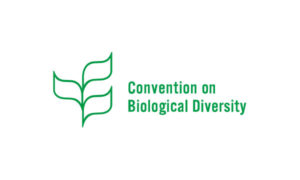
Introductory Course to the Convention on Biological Diversity (CBD)
Online | InforMEA

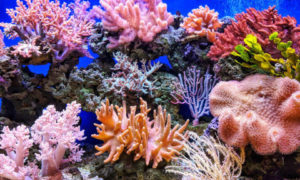
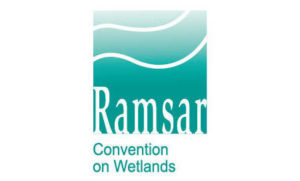
Introductory Course to the Ramsar Convention on Wetlands
Online | InforMEA

Communicating the Value of Biodiversity
Online | CBD, UNDP, NBSAP Forum, and Rare
Resources
- To sustain and restore biodiversity and ecosystem services, we need investment in ecosystem Red List assessments and the data that underpins them | IUCN | 16 February 2024
- Le Bioparc veut créer un refuge pour animaux au Domaine de Penthes | Tribune de Genève | 25 October 2021
- Why nations should step up efforts to secure biodiversity | The Standard | 24 October 2021
- Cities’ answer to sprawl? Go wild | Bloomberg | 22 October 2021
- Swiss people crave more naturally wild areas, survey finds | Swissinfo | 21 October 2021
- Global finance industry sinks $119bn into companies linked to deforestation | Financial Times | 21 October 2021
- ‘Nature is not a commodity’: Can the world learn from indigenous peoples’ food systems, before they are lost? | CNN | 20 October 2021
- How environmental damage can lead to new diseases | The Economist | 19 October 2021
- Nature doesn’t recognise borders but countries can collaborate to save species. The Escazú Agreement shows how | The Conversation | 19 October 2021
- Changes to global fisheries subsidies could level the playing field for traditional coastline communities | Mongabay | 18 October 2021
- Current decade is last chance to prevent total collapse of coral reefs: Status report | IISD SDG Knowledge Hub | 14 October 2021
- World leaders meet to address biodiversity crisis, but U.S. stays on sidelines | Scientific American | 14 October 2021
- Nature loss could be as ‘catastrophic’ as climate change, so how can we prevent it? | Euronews | 14 October 2021
- China: Over 100 nations to adopt ‘Kunming Declaration’ to boost biodiversity | DW | 13 October 2021
- Notorious wildlife market, largest in Peruvian Amazon, back in business after pandemic hiatus | National Geographic | 13 October 2021
- Illegal and unsustainable wildlife trade is affecting all of us – what can we do about it? | Science Daily | 13 October 2021
- COP15: Countries debate new biodiversity plan | DW | 11 October 2021
- How the UN’s Global Biodiversity Framework could become the ‘Paris Agreement for nature’ | WEF | 11 October 2021
- Increasing crop yields will leave more room for wildlife | Sustainability Times | 7 October 2021
- How oil spills harm birds, dolphins, sea lions and other wildlife | CNN | 6 October 2021
- Spotlight on nature and biodiversity | UNEP | 6 August 2021
- Embracing a global goal for nature | WBCSD | 30 April 2021
- UN report: Nature’s dangerous decline ‘unprecedented’; species extinction rates ‘accelerating’’ | UN | 6 May 2019
- Science, Biodiversity and Nature | Swiss Science Guide App
GEN Events

Briefing on the 77th meeting of the CITES Standing Committee
17 October 2023


Ciné Environment House | Chaos in the climate of the Sundarbans
25 January 2023
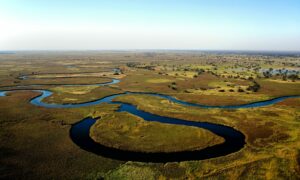
Unpacking the Potential of Wetlands for Addressing Climate Change and Biodiversity Loss
Ramsar COP14 Side Event |8 November 2022
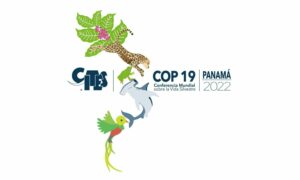

The Triple Planetary Crisis: Breaking Silos
INTECOL 2022 & Alternatiba Festival | 31 August 2022
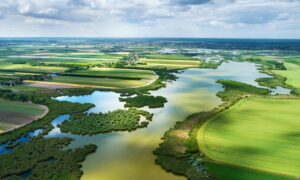
The Value of Nature: Finance for Biodiversity
INTECOL 2022 | 30 August 2022
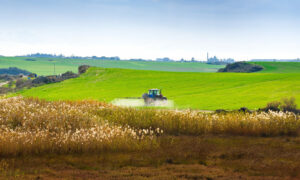
Chemicals, Waste and Biodiversity
CBD Side Event | 27 March 2022

Integrating Human Rights in the Future of Biodiversity Action
CBD Side Event | 22 March 2022
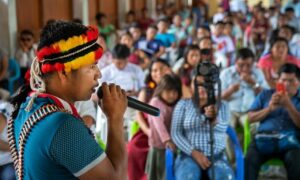
Applying a Human Rights-based Approach in the Post-2020 Global Biodiversity Framework
CBD Side Event | 19 March 2022

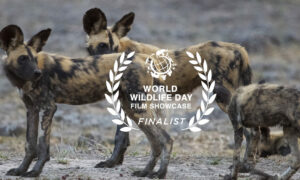
World Wildlife Day Film Showcase: Nature’s Fear Factor
Wednesdays for the Planet | Co-organized with CITES | 2 March 2022

Killing the Shepherd | World Wildlife Day
Wednesdays for the Planet | Co-organized with CITES | 23 February 2022
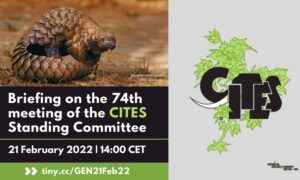
Briefing on the 74th meeting of the CITES Standing Committee
21 February 2022

How to Ensure a Resilient Global Biodiversity Framework to Disaster and Climate Risks?
Co-organized with PEDRR and FEBA | 20 January 2022
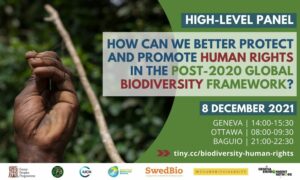
How Can We Better Protect and Promote Human Rights in the Post-2020 Global Biodiversity Framework? | High-Level Panel
Co-convened with Forest Peoples Programme, Swedbio, the International Indigenous Forum on Biodiversity (IIFB), the Global Youth Biodiversity Network (GYBN), IUCN, and Women 4 Biodiversity | 8 December 2021
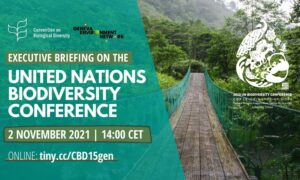
Executive Briefing on the United Nations Biodiversity Conference
2 November 2021

Wednesdays for the Planet | The Song of the Sperm Whale
Film screening | 6 October 2021
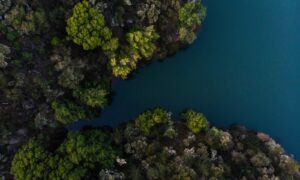
Nature-based Solutions and the Post-2020 Biodiversity Framework
Geneva Nature-based Solutions Dialogue | 28 June 2021

Nature-based Solutions and Ecosystems Restoration
Geneva Nature-based Solutions Dialogues | World Environment Day & UN Decade on Restoration | 7 June 2022

Wednesdays for the Planet | Europe Reclaims Biodiversity
World Environment Day | 2 June 2022
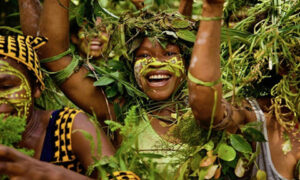
Human Rights Depend on a Healthy Biosphere
HRC46 Side-event | 5 March 2021

UN Biodiversity Conference (CBD COP15)
GENeva Environment Dialogues | 26 May 2020
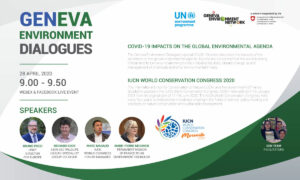
IUCN World Conservation Congress
GENeva Environment Dialogues | 28 April 2020
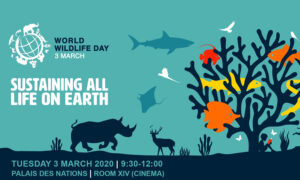
World Wildlife Day | Sustaining All Life on Earth
3 March 2020

